
We’re all guilty of stereotyping.
Using mental shortcuts to evaluate the world around us can be helpful at times, but it can just as easily lead us astray. My own preconceived notions across a variety of topics and situations have been proven wrong so many times now that I try my best to avoid making pre-judgements. And yet I find myself falling into the same old trap time and again.
“I don’t like bikes with 27.5″ wheels.”
“A $2,700 ($2,900 now) full suspension bike is okay, but a $5,000 bike will ride much, much better.”
Testing the Canyon Spectral AL 5.0 for a couple of months this summer has forced me to reconsider what I think I know about trail bikes.
Canyon is well known for offering high-quality bikes sold direct-to-consumer in many countries around the world. I recently unboxed a new Spectral AL 5.0 trail bike that’s in for testing, and here are my initial impressions.
Delivery is dialed





It’s clear from the packaging, materials, and included instructions that Canyon works hard to make sure new bike setup goes smoothly. I’m not usually one to get excited about unboxings, but the whole experience was far and away the best I’ve had among many dozens over the years. Everything is packed neatly in the box using high quality and purpose-made packing materials. For example, instead of using zip ties to keep items from moving around, Canyon employs reusable velcro strips with thick pieces of padding attached.
All of the tricky bits are assembled ahead of time, though of course buyers will need to install the front wheel and attach the handlebars to the stem. The dropper post was not pre-installed on my bike so I needed to connect it to the cable which was already inside the seat tube, insert the post, and attach the lever to the bars. Canyon includes all the necessary tools in the box, including a torque wrench that’s pre-set for use with the corresponding bolts.
A computer keyboard sized box included in the package has all the manuals, tools, and accessories riders need to get going, including a shock pump and a set of flat plastic pedals. The bike ships with reflectors on the bar, seat tube, and wheels, which I chose to remove along with the “pie plate” between the cassette and the spokes on the rear wheel.
I didn’t run into any issues or need help setting the bike up, but it was very clear from the included materials where to go to get assistance.
The Canyon Spectral

The Spectral is Canyon’s 27.5 trail bike with 160mm of travel up front and 150mm in the rear. (Size extra small and small frames offer 140mm of rear travel.) The AL 5.0 version I’m testing is new for 2020, and is currently the only aluminum Spectral build available from the brand. The bike retails for $2,699 and the size extra large I’m riding weighs 33.3lbs with pedals.
Overall, the Spectral geometry is fairly standard, with a 66° head tube angle and a 74.5° seat angle. The 482mm reach on the extra large I have isn’t overly long, which so far makes for a comfortable fit. Chainstays are 430mm long.

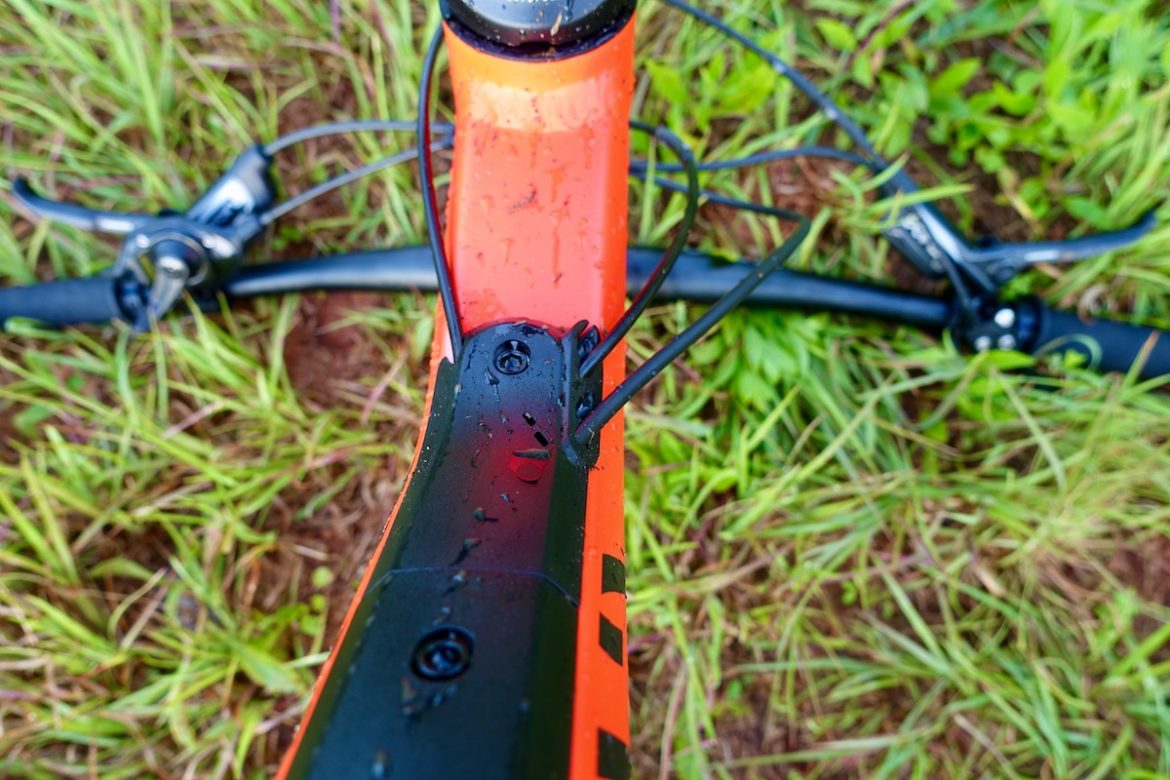


One of the things that initially impressed me is the cable routing on the Canyon Spectral. A channel running along the underside of the downtube, and another along the left stay tucks everything in neatly and should also make for easy cable changes. This configuration should be less prone to rattling than truly internal routing schemes.
Canyon ships the bike with clear frame protection covering the most vulnerable parts of the frame, and even the integrated chainstay protector appears to be robust, though I’ll be checking to see how quiet it is on the trail.
The Spectral is available in two colorways: Stealth and Super Red. If you’re not sure which one I’m testing, please make an appointment with your eye doctor immediately. I’m really into the red color, but it’s probably not for everyone.
The Spectral 7 build

Canyon does a nice job speccing the Spectral AL 5.0 with a solid parts list. The main draw for most buyers will be the RockShox Pike Select fork up front, as it’s always a solid performer. A RockShox Super Deluxe Select+ RT shock handles the rear suspension.
To offset the fork splurge, Canyon goes with a SRAM NX 12-speed drivetrain which should at the very least offer consistent, durable shifting. The bottom bracket is a SRAM DUB press fit model.





The included Race Face ARD wheels feature a 30mm internal width rim which is a good match for the 2.5-inch-wide Maxxis Minion DHR II tire on the front and 2.5-inch-wide Maxxis Aggressor out back.
SRAM Guide T brakes, Race Face bar and stem, and SDG Fly Mtn saddle round out the branded component mix. Canyon specs their own dropper post, dubbed the Iridium, along with a set of G5 flange grips. I’ll be replacing the grips right away since I’m not a fan of flanges, and will wait and see on the saddle. Everything else should be good to go right out of the box.
Breaking in the Canyon Spectral
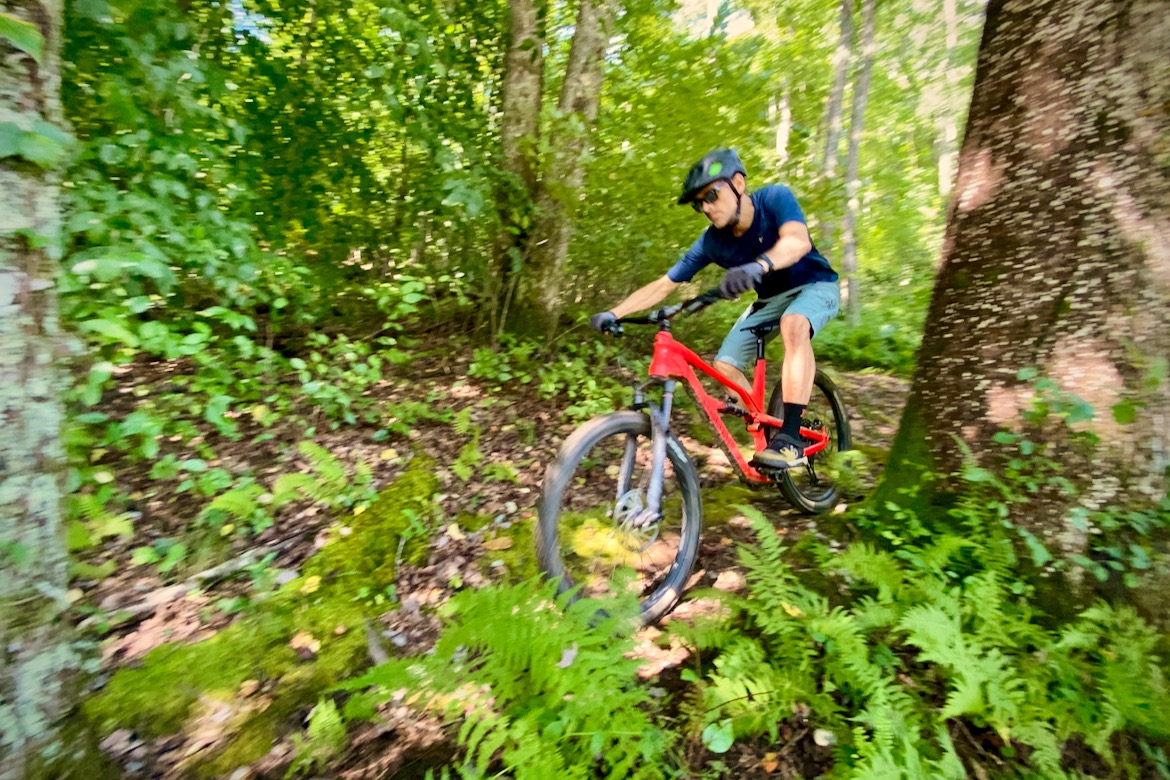
Following the “on test” article we published back in June, I immediately spent some time dialing in the Canyon Spectral for bigger rides. For starters, my test bike shipped with tubes installed in the tires which is great for keeping air in them during shipping, but generally frustrating for most actual rides. To be perfectly honest, I didn’t bother checking the insides of the tires before a few early rides, resulting in a pinch flat in the rear that followed a square-edged rock hit.
Somehow my bike arrived without tubeless tire valves in the box, though I’m told this is unusual and easily fixed with a call to customer service. Fortunately the tires and rims are tubeless-ready, and I had no problem converting to tubeless with my own valve, sealant, and a regular floor pump.
Initially I planned on swapping out the flanged, G5 grips because, “I don’t do flanged grips.” (Yet another preconceived notion.) Well, I never got around to swapping the grips for another pair and along the way, I realized that I actually don’t mind the flanges on the G5s very much.
While the Spectral features mounts for a single water bottle inside the front triangle, mine didn’t come with the necessary bolts to attach a cage. Instead, rubber stoppers fill the threaded holes. I spoke with a Canyon representative who says the bolts, like the valves, should ship with the bike, and that replacements are available upon request.
About halfway through my testing, I swapped out the stock saddle for another, though only because I needed to test a different saddle and not because of any problem with the original.
Canyon upped the price on the Spectral AL 5.0 by two hundred bucks to $2,899 since my “on test” article a couple of months ago. With bikes in high demand at the moment, unfortunately, the Canyon website is showing all sizes of the bike are currently unavailable. Even with the extra $200, this bike still represents a great value.
For more info on geometry and the build I tested, start here.
Getting down to business

Coming off of testing the Niner RIP 9 which offers 150/140mm of travel front and rear, I figured the 150/160mm Canyon Spectral would also be overkill for my neighborhood and front-country rides. In fact, it was an absolute blast to ride everywhere I went, whether I was pedaling for miles or gripping and ripping fast descents.
Earning turns on the Canyon Spectral

Heading up the mountain, the Canyon Spectral front end feels surprisingly planted. The 66° head tube angle isn’t overly slack, and the 74.5° seat tube pushes your bodyweight forward to improve the overall balance. The upshot is a leading end that’s not prone to wandering, even at low speeds or low energy.
I tend to power up hills as quickly as my lungs allow, often in a gear that’s one click too stiff, and yet I noticed very little pedal feedback from the rear end. This is all the more surprising given how supple and responsive the suspension feels overall. Small bump sensitivity is excellent, planting the tires on technical climbs, and keeping the rider in the flow on rooty descents.
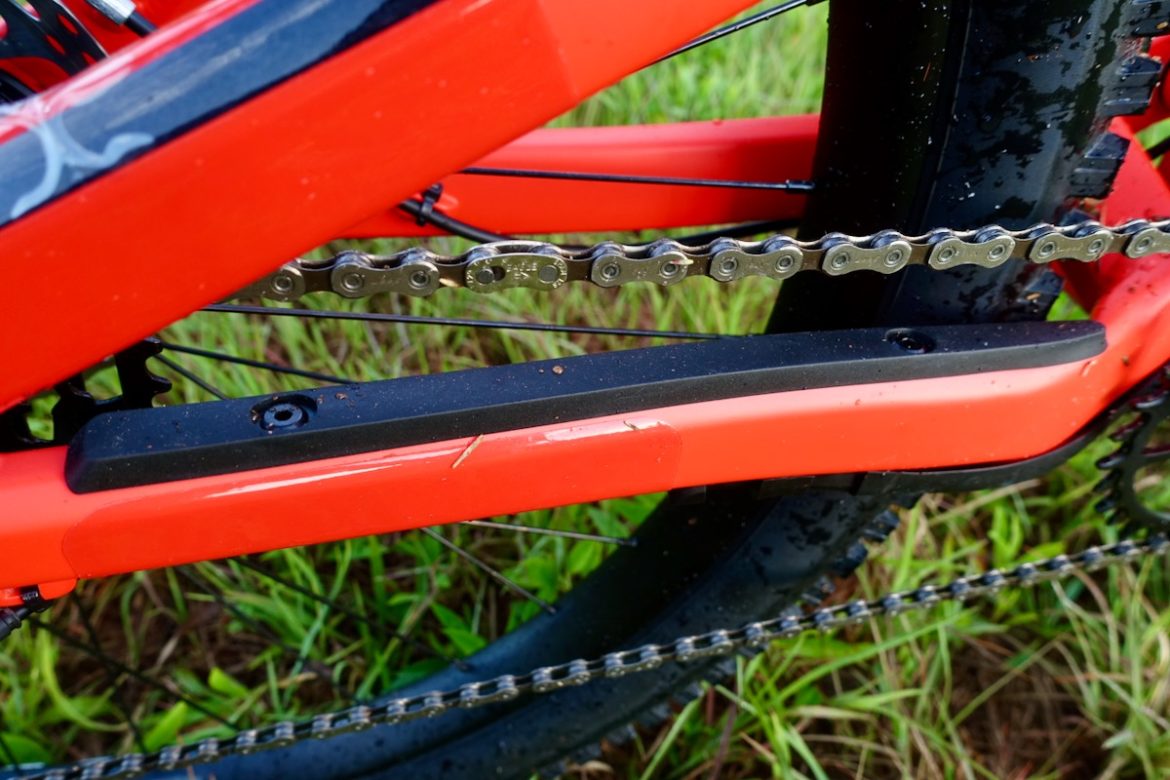
On narrow, tree-lined climbs with awkward switchbacks, the Spectral threads needles with aplomb. The 27.5″ wheels certainly contribute to the overall nimble handling of the bike, as do the reasonably short 430mm chainstays.
During the pandemic, I’ve been pedaling a bit farther than usual to access singletrack trails, and I’ve found the Spectral’s suspension platform is plenty efficient to knock out the miles. Heavier or more aggressive riders might find the stock EXO casings under-gunned, but the upshot is these lighter-weight tires are more pedal-friendly than others, yet still handle great in most conditions.
29ers are known to be more efficient than 27.5″ wheeled bikes when it comes to keeping the momentum going as the ride transitions into grind mode, but in my experience, the Spectral doesn’t suffer too much on this front. Unlike mountain bike racers, trail riders don’t really need to focus on a few seconds that bigger wheels might be able to shave off the ride anyway.
Play time on the Canyon Spectral

With 150mm of rear travel, Canyon manages to cram plenty of descending capability into this 4-bar suspension design. Riding rough, steep descents is a joy, and the bike tracks the terrain with great control. Setting up the rebound to my liking was simple, and I quickly found the sweet spot for small bump sensitivity. With this setup I wouldn’t take the Spectral to the bike park or attempt questionable landings, but I found the bike handled every reasonable demand I could make, even when those demands came unexpectedly.
The RockShox Pike Select may not be top-of-the-line, but I found its performance above reproach. Similarly, the RockShox Super Deluxe rear shock is incredibly smooth and responsive while offering plenty of adjustability for most riders.


As with many mountain bikes on the market, the lower linkage tends to be a bit of a red clay shelf. I didn’t experience any tire clearance issues associated with the duff stuff, though it does require a bit of regular cleaning between rides.
One concern I had going into the review was whether the bike would be quiet on the trail, particularly when descending fast and rough trails. It turns out the downtube cable channel is super effective at minimizing cable rattle, and everything else is as buttoned up and silent as one would expect from a much more expensive build.
Many riders have come to appreciate the consistent handling of the Maxxis Minion DHR II up front, and combined with an Aggressor out back the Spectral corners like a stickup man in a back alley. The 22mm bottom bracket drop gets the center mass low enough for excellent handling, without excessive pedal strikes.


The Canyon Spectral AL 5.0 build ships with SRAM Guide T brakes, and while the brakes boast a 4-piston design, they feel noticeably under-powered even for this trail bike. Still, they are lightweight and perform pretty consistently.

Sometimes bike stuff that looks good doesn’t necessarily work well, and I had my doubts about the Iridium dropper post and associated seat post collar. The whole thing looks a little too slick and plasticky, as if the post itself would slide inside the seat tube after a few good bumps. As it turns out the seat post gave me zero issues during my testing. The dropper post works well enough overall, though it’s not the fastest or smoothest I’ve tested.
Bikes in this price and suspension class are meant to be fun to ride, and on that count the Spectral overwhelmingly delivers. To use the cliché, the 27.5″ wheels add to the bike’s “playfulness,” and what that means in practice is the rider feels inclined to pop off more features; to try more progressive moves; and to avoid taking the ride too seriously.
Judge not
Confronting stereotypes is often uncomfortable, and being wrong never feels great. Yet, there’s a big upside: it’s a great chance to learn something new.
No, I don’t have to have 29er wheels to go fast and to have fun. Yes, it is possible for a $3,000 full suspension bike to feel nearly identical to something much closer to the top of the line.
Don’t even get me started on the aluminum vs. carbon mountain bike frames.


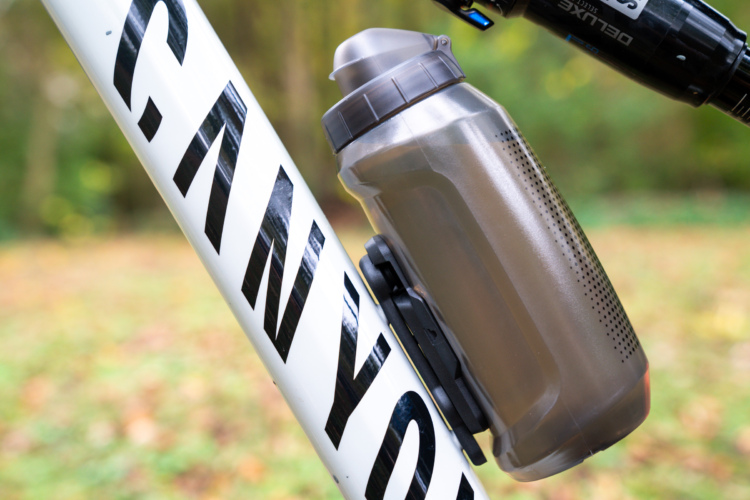
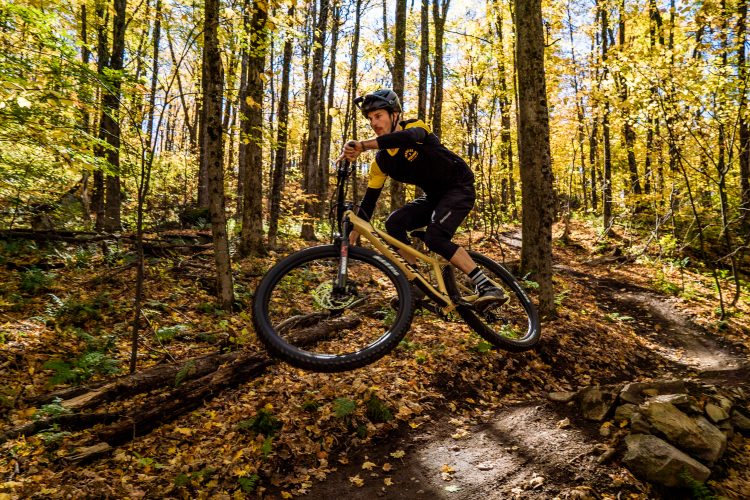

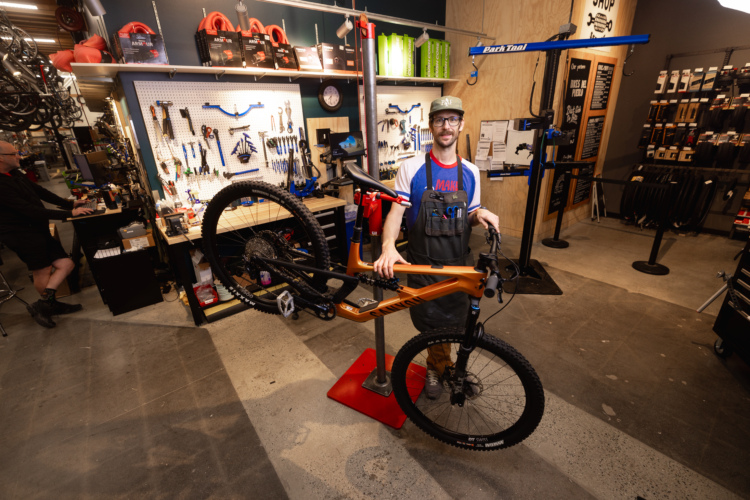
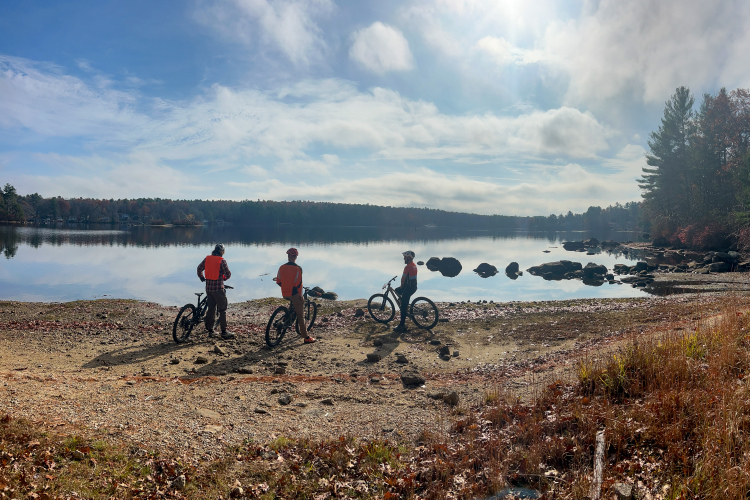

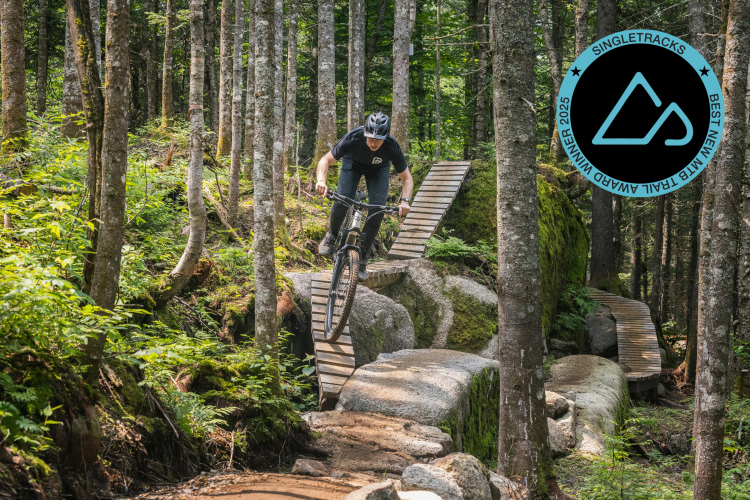


11 Comments
Sep 1, 2020
Jan 17, 2022
Sep 7, 2020
Sep 8, 2020
Apr 25, 2021
Mar 24, 2021
Mar 24, 2021
Sep 5, 2020
Apr 25, 2021
I looked seriously at this bike before buying my current bike and found a major issue with the sizing, particularly the seat tube. I could not fit a normal 150mm dropper on a size large frame at 5,10. That's a deal breaker for me. I have a 180 on my full suss and 210 on my hardtail and will not buy another frame I can't run a 210 on. Long droppers are as much of an improvement from short droppers as short droppers are to fixed posts. Until canyon cuts the ridiculous seat mast off this bike, it's really limited by this terrible design choice. People will still buy them since it's a great deal, but it's a shame they screwed up then sizing so much with that crazy seat tube and collar design. Maybe it will fit if you are all legs and built like a T rex, but even then you'd want a longer dropper.
Apr 25, 2021
I am 5'10" as well but I have long legs, I am using a 210mm one up dropper on large frame with about 10mm to spare. And I am happy with reach its not too long for me. I am very happy about stack though, I don't feel like handlebars are too low which I did on most other bikes.
May be you would have been better with medium sized spectral if lower reach and stack numbers would have worked for you. If not then I think spectral isn't a great solution for long torso shorter leg riders but does very well for long leg short torso riders like me.
-T rex
Nov 4, 2023